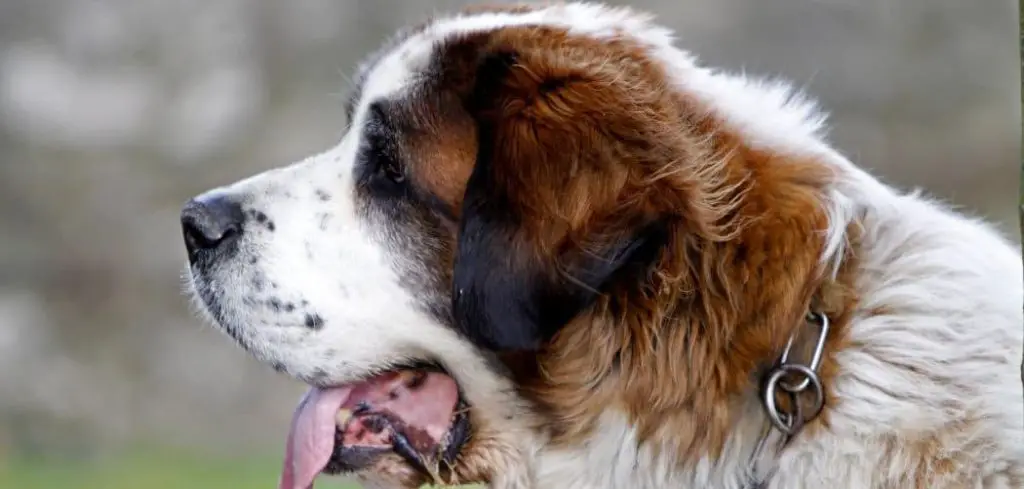If your dog is panting more than usual, even when it’s not hot or after exercise, it’s a sign that something may be wrong. Abnormal panting can be your dog’s way of telling you they’re in pain, or dealing with a medical issue.
We outline the likely causes of a dog panting abnormally, what you can do at home, and when to seek veterinary help.
Dog Panting Abnormally — Why It Happens
Abnormal panting in dogs is often a signal of an underlying health concern or emotional distress. Conditions such as heart disease, respiratory issues, and Cushing’s disease can all lead to excessive or erratic panting. Anxiety, pain, and overheating are also common contributors.
When panting doesn’t seem tied to heat or exertion, it’s important to take it seriously and investigate the cause.

Common Causes of Abnormal Dog Panting
Heart Disease
Heart problems can reduce your dog’s ability to circulate oxygen efficiently.
This lack of oxygen leads to increased panting as the body tries to compensate.
You might notice coughing, lethargy, or exercise intolerance alongside abnormal panting.
Heart disease is especially common in older dogs and can progress quickly if not managed.
Panting may occur even while your dog is resting or sleeping.
Cushing’s Disease
Cushing’s disease causes the body to produce too much cortisol, the stress hormone.
One of the most noticeable symptoms is excessive panting, especially at night.
Dogs may also have a pot-bellied appearance, increased hunger, and frequent urination.
This hormonal imbalance affects many internal systems and often causes long-term discomfort.
Early diagnosis can help slow the disease’s impact and manage symptoms like abnormal panting.
Read more: Dog Panting and Not Eating (What’s going on?)
Respiratory Disorders
Any condition affecting the lungs or airways can cause labored or erratic breathing.
Bronchitis, pneumonia, or laryngeal paralysis can restrict airflow, prompting your dog to pant heavily.
You may hear wheezing or see signs of difficulty breathing even when your dog is calm.
These conditions can escalate quickly and require prompt treatment.
Breathing changes in dogs should always be evaluated promptly.
Pain or Discomfort
Dogs pant when they’re in pain—even if there are no visible injuries.
Arthritis, internal inflammation, or dental pain can trigger constant or intermittent panting.
Look for signs like limping, restlessness, or changes in appetite.
Because dogs instinctively hide pain, panting may be one of the only visible clues.
If your dog seems off and is panting more than usual, pain is a real possibility.
Anxiety or Stress
Panting is a natural response to emotional distress in dogs.
Thunderstorms, separation, car rides, or unfamiliar environments can lead to anxious panting.
Some dogs may also tremble, pace, or cling to their owner when nervous.
This kind of panting often comes and goes based on triggers, but can still be exhausting for your dog.
If the behavior becomes frequent, your dog may benefit from calming aids or behavior training.
Heatstroke
Overheating is one of the most dangerous causes of abnormal panting.
If your dog is panting heavily in hot weather or after being outdoors, immediate cooling is crucial.
Look for signs like drooling, bright red gums, vomiting, or collapse.
Heatstroke progresses rapidly and can be fatal if not addressed.
Never leave your dog in a hot car or direct sun without access to water and shade.
What to Do If Your Dog Is Panting Abnormally
Start by identifying any obvious environmental or emotional triggers—has your dog been in the sun, exercised, or had a stressful experience?
Offer cool water and bring your dog to a quiet, temperature-controlled area.
Observe their breathing closely—are they able to settle, or is the panting persistent?
Try to keep your dog calm. Avoid encouraging activity or excitement until their breathing normalizes.
If the panting continues despite rest and a cool environment, it’s time to consider a medical issue.
Never attempt to medicate your dog at home without veterinary direction.
When to Call or Visit Your Vet
If your dog’s panting is:
Rapid and unrelenting
Accompanied by pale or blue gums
Coupled with vomiting, collapse, or disorientation
Interfering with sleep or normal behavior
Paired with coughing, weakness, or abdominal swelling
You should call your vet right away.
Persistent abnormal panting is a red flag that should never be ignored.
In some cases, a same-day visit could prevent a life-threatening situation.
It’s always better to err on the side of caution when your dog’s breathing seems off.
Read more: Dog Panting and Acting Weird (What’s going on?)
Key Takeaway
Abnormal panting in dogs is often their way of telling us something is wrong—whether it’s physical discomfort, emotional stress, or a deeper health condition.
Stay alert to changes in your dog’s breathing patterns and trust your instincts if something seems off.
By acting quickly and thoughtfully, you can help your dog breathe easier and stay healthy.
If in doubt, your vet is always the best resource.
